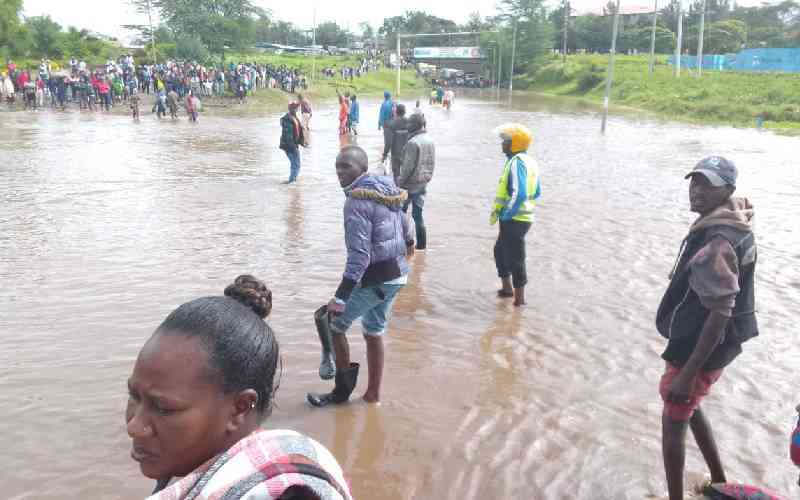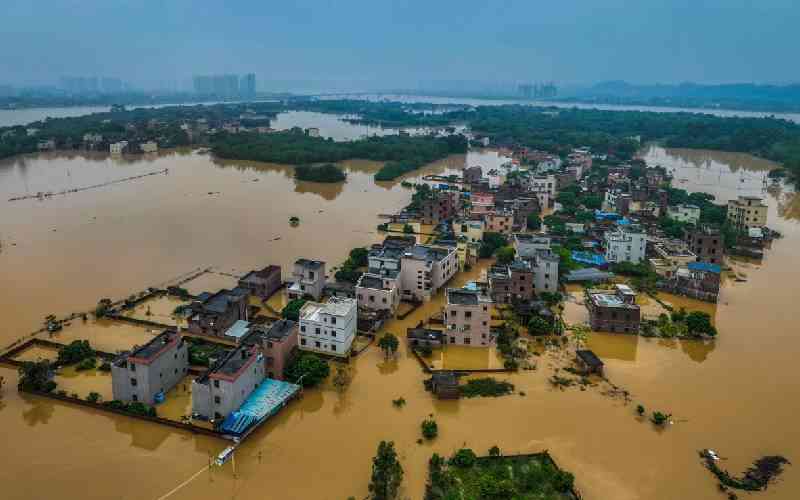The long rains have hit most of Kenya so much that places like Bondo have endured floods that sadly took away lives. Water is life, so when it results in death, something is extremely wrong.
Kenya receives sufficient rainwater for every homestead in the entire country. Tragically, most of this water is wasted. The fact that we allow rainwater to wash away is an act of sheer ignorance. This truth hit home recently when a colleague excused herself from a meeting since she had to rush home and collect water in large containers. That was the chosen day for water to be pumped into her estate. Ironically, preceding days had been full of rain that was more of an irritant and traffic jam trigger to her and most city residents.
When it rains, we should all honk in celebration, not in irritation. But only if we begin to perceive rainwater as an ultimate solution to our water needs whether we live in urban or rural areas.
Achim Steiner, Executive Director of the UNEP, once said, “widely deployed, rainwater harvesting can act as a buffer against drought events..., while also significantly supplementing supplies in cities and areas connected to the water grid.”
Integrating rainwater infrastructure into new urban construction will enhance rainwater harvesting in major cities. Unfortunately, Kenya like other African countries does not have a policy on rainwater harvesting. The efforts of Kenya Rainwater Association that brings together players in the sector must be duly complemented by legislation. A comprehensive policy would then be harmonised with other law-making tools, including a revamped Building Act and an Infrastructure Bill.
Chennai, an Indian city whose population is roughly the same as Nairobi’s, made rainwater harvesting compulsory for all its buildings. This is the way to go for our cities. Such water can either be pumped into the water grid of respective cities or used in individual housing units. Either way, water availability would be increased and money saved.
But for rainwater to change our lives and economy, there must be informed and strategic action. Even the ordinary Kenyans need to calculate their water demand, measure the amount of rainfall then design the catchment and appropriate storage. This way, the harvested rainwater will meet specific needs. Such is the approach that has been taken in Gansu, China and in the process met all water needs of at least 1.2 million people.
One of the skilled and most passionate Kenyans about rainwater is Eng Simitei Kooke, a senior official in the Ministry of Water and Irrigation. He designed a water harvesting demo system in Oldonyo Lasho village in Magadi. Since its installation in 2011, the village has never lacked water. What has happened in this Maasai land can and should be replicated across the country. I suggest that President Uhuru Kenyatta leads Kenya to become a green country that taps into its rainwater for sustainable development.
 The Standard Group Plc is a
multi-media organization with investments in media platforms spanning newspaper
print operations, television, radio broadcasting, digital and online services. The
Standard Group is recognized as a leading multi-media house in Kenya with a key
influence in matters of national and international interest.
The Standard Group Plc is a
multi-media organization with investments in media platforms spanning newspaper
print operations, television, radio broadcasting, digital and online services. The
Standard Group is recognized as a leading multi-media house in Kenya with a key
influence in matters of national and international interest.
 The Standard Group Plc is a
multi-media organization with investments in media platforms spanning newspaper
print operations, television, radio broadcasting, digital and online services. The
Standard Group is recognized as a leading multi-media house in Kenya with a key
influence in matters of national and international interest.
The Standard Group Plc is a
multi-media organization with investments in media platforms spanning newspaper
print operations, television, radio broadcasting, digital and online services. The
Standard Group is recognized as a leading multi-media house in Kenya with a key
influence in matters of national and international interest.









